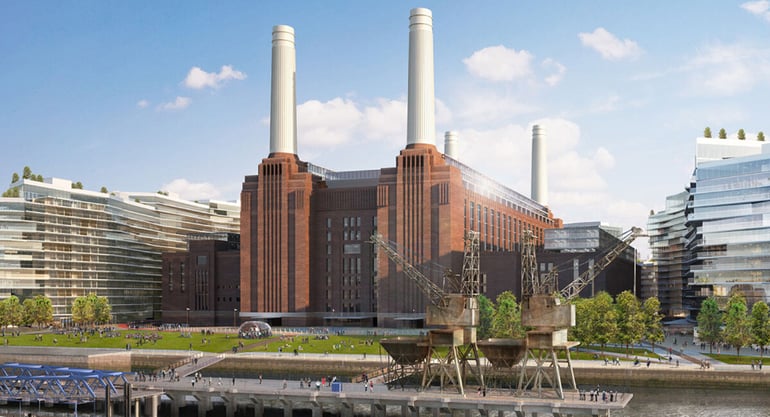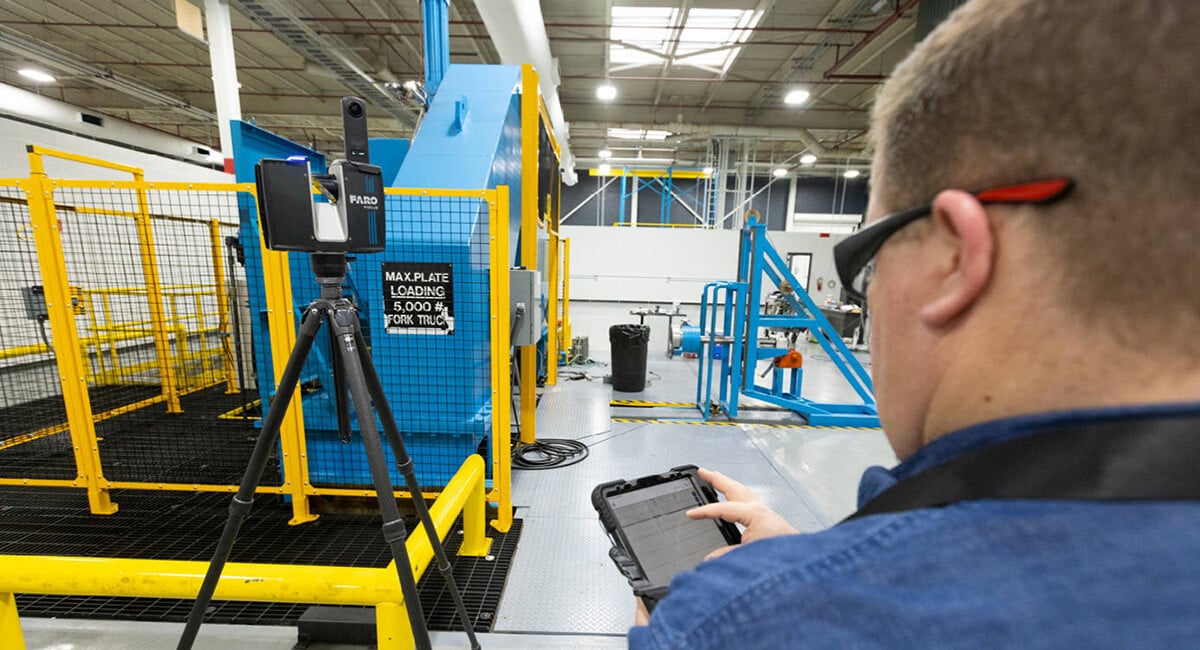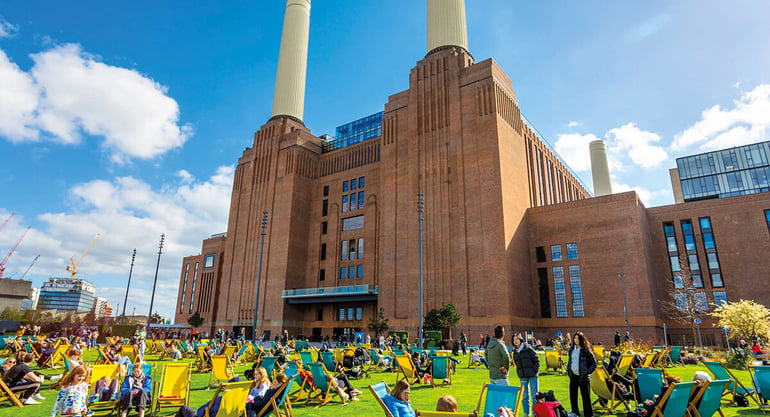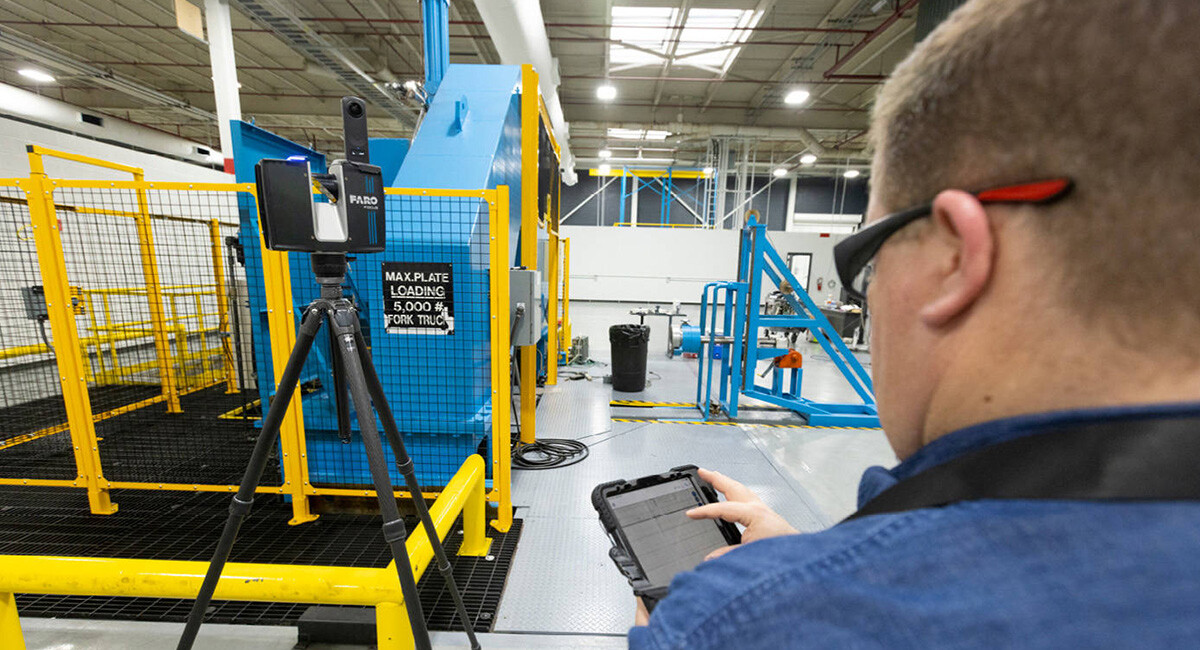A New Way to Capture Large-Volume Construction and Fulfill Pre-Incident Planning Needs
For engineering and construction professionals 2022 and 2023 will be remembered as banner years as one of the most imposing and ornate mega-structures of the 20th century — London’s Battersea Power Station — was given a radical new lease on life.
Original Source - FARO Technologies
Note: The following article is the first in a three-part series dedicated to Flash Technology. Article I is intended as an overview piece, discussing what hybrid reality capture is and the benefits of its use. will go into greater technical detail about Flash Technology working in concert with the FARO Focus Core, Premium and Premium Max Laser Scanners. Article III will discuss Flash Technology as used with the new FARO Orbis Mobile Scanner.

After sitting abandoned and rotting from the inside out for nearly 40 years since its 1983 decommissioning, the defunct former coal-fired Art Deco behemoth re-opened to the public as a vastly re-imagined mixed-use space.
But even with a largely positive media response and a hefty dose of sheer will from its modern re-developers, the project’s latest iteration has been in development for 8 years and has cost around $10 billion to complete — nearly the same as the 2021 GDP for the Bahamas.
For all the deserved celebration of this iconic global landmark, Battersea’s embattled rebirth raises an important question: could such large-volume undertakings be completed faster with enhanced construction project monitoring, more limited time spent on site, safer with fewer personnel involved, and with no loss in data accuracy when it comes to mapping and measuring the structure’s as-built condition?
The answer to this question is: ‘Yes!’

Flash Technology 101
It’s a ‘Yes’ thanks to an innovative new technology solution that recently entered the construction and engineering and public safety markets: Hybrid Reality Capture, powered by Flash Technology.
What is a Flash scan?
A Flash scan is the fastest stationary scan available today, offering exceptional speed without compromising on high quality colorisation, density or accuracy. While it slightly smooths finer details compared to traditional static scans, it remains faster and highly reliable. Compared to a mobile scan, it trades a bit of productivity for the precision gained by remaining stationary for just 15 seconds.
Why Hybrid Reality Capture?
We call this technology hybrid because it achieves this groundbreaking result by merging two distinct approaches in 3D and imaging data capture. With the Focus laser scanner, we combine 360° panoramic images with a higher-speed laser scan, using a smart data upscaling technique (more details in Article II). For the Orbis mobile scanner, we integrate 360° panoramic images with a stationary accumulation of 3D points, utilising SLAM technology and a smart data fusion method (more details in Article III).
Whether it’s breathing new life into an aging power plant, the re-imagining of urban cores, or it’s reducing loss-of-life in the wake of a mass-casualty event, Flash Technology, will, to a large extent, solve the speed-accuracy tradeoff (SAT) and will allow construction and engineering and public safety professionals to do their jobs better, safer, faster and just as accurate when compared to traditional 3D terrestrial laser scanning methods.
Developed as a “best-of-both-worlds innovation,” Flash Technology will improve on-site productivity and deliver state-of-the-art colorised visual clarity at a highly affordable price. Industries that have long made tradeoffs between capturing 3D data accurately or quickly will benefit greatly as this hybrid solution continues to saturate the market.
Said another way, with Flash Technology, users can expect to take fully colorised scans in less than 30 seconds versus over a minute to take a traditional scan and even more time than that to process the data. Thirty seconds saved may not sound transformative on its own. But what we are dealing with is a mass multiplier effect.
By cutting scanning time in half, with virtual no loss in data accuracy, Flash Technology is pioneering an imaging breakthrough in the 3D measurement and laser scanning space. This will enable accelerated workflows, faster project completion times, and the ability to take more scans with the time saved, leading to greater coverage and an even better understanding of the built environment. This is true for both Architecture, Engineering, Construction, and Operations & Maintenance (AECO) as well as for Public Safety Applications (PSA), including pre-incident planning (identifying entrance and egress points, places of lockdown congregation, i.e. “safe rooms,” the location of ladders and related evacuation equipment, and near real-time situational awareness, determining if evac assets have moved from one scan to the next.
As urban cores adapt to their vacancy-taxed realities, with a flexible mix of in-person and hybrid employment (requiring enhanced pre-incident planning to mitigate worst-case scenarios should they occur) many buildings of varying size, use, and complexity will necessarily undergo important renovations and remodels. They are conversions essential to fit our new work-life balance and reflect today’s increasingly creative ArtReview opinion piece that, increasingly, “we live in the age of renovation.”
"We live in the Age of Renovation"

Scanning the Future with the Technology of Today
With approximately 100 billion buildings of all shapes and sizes in the world, many of them in developed countries in need of renovation, remodeling and refit, there has never been a more pressing time to bring new efficiency and accuracy-driving solutions like Flash Technology to market. Hybrid Reality Capture — and the future technologies it will help inspire — is rising to its historical moment.
When it comes to adopting 3D laser scanning and panoramic photography, long gone are the days when only specialists would consider investing in the hardware and software needed. In the four decades since their nascent development, 3D laser scanners have come a long way. Today, it is the technology generalist who is increasingly interested in adopting these products.
Flash Technology, by its very nature, will further democratise the benefits of accurate, good-looking, easy-to-interpret and easy to acquire data for just such adopters.
If Battersea’s rebirth has one resounding message for a skeptical world, it’s that when it comes to large-volume construction and multi-decadal planning, anything is possible. And that if a massive project like this can be envisioned by the likes of Wilkinson Eyre, the famed international architectural firm, it can be delivered.
Projects like this that are already underway — and others yet to receive their groundbreakings — will benefit greatly from Flash Technology and the newest iterations it will help to inspire.
Large-volume construction and pre-incident planning is about to be transformed.
Forever.



